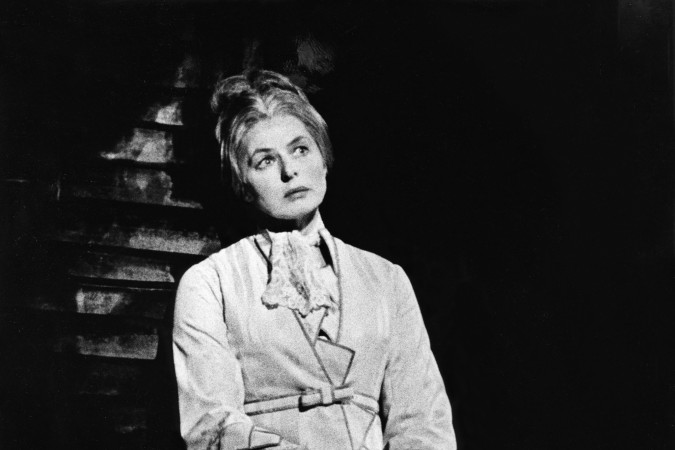Our Theatre: Faces of the Future
From the Center Theatre Group Archives

When Center Theatre Group began at The Music Center in 1967, and Founding Artistic Director Gordon Davidson oversaw our works at the Mark Taper Forum, Tony Award®-winning producer Elliot Martin, another early leader of the organization, led the Ahmanson Theatre’s programming. Martin, who passed away on May 21, 2017, began Center Theatre Group’s life at the Ahmanson with the American premiere of Eugene O’Neill’s More Stately Mansions starring Ingrid Bergman, which opened September 12, 1967. Here is Martin’s letter that those first Ahmanson patrons read in the program for this inaugural production.
From the time our theatre was born in Greece every nation has had at least one era in the sun, stepping from the shadow with a Shakespeare, Moliere, Ibsen, Chekov, Pirandello, and Brecht. Each was preceded or followed at intervals by other gifted compatriots. Now, at last, it appears to be America’s turn. Our greatest playwright, Eugene O’Neill, after a period of obscurity, has assumed his rightful and permanent place at the head of the drama table. This tardiness is not without precedent. Other lands have been slow at times to recognize their own genius. The portent for the American theatre may be in our opening season of the Ahmanson Theatre in which we are joined [by] the best of two worlds, the old and the new, peopled by outstanding artists from both hemispheres.
With this beginning, Center Theatre Group emerges among the frontrunners of our country. Once tributary to Broadway, Los Angeles is now helping to erase the historic boundaries and is taking up a position of independence and equality. Three of the events in this season’s schedule originate in the production office of Center Theatre Group: the English language premiere of O’Neill’s last unproduced work, a trip into the unconventional with Jack Good’s “cool” version of Othello, and the exclusive engagement in North America of the Royal Shakespeare Company. The fourth, David Merrick’s presentation of the Gower Champion musical, The Happy Time, represents an entente between the erstwhile hub and the new axis of our as yet unformed national theatre. East and West not only meet but begin to coexist in this new state of affairs. Center Theatre Group hopes to maintain and develop this position.

Starting our life with O’Neill has additional significance. Until his appearance the theatre of the United States as raggle-taggle, nondescript, active but helpless under Continental influences and imports. With O’Neill our native drama was born and today it is barely a half century old. We still do not have a single face by which we are known to the world, except perhaps by our unmatched talent in the genre of musicals. Possibly as a national art our theatre may never have a single identity. Being a giant geographically, our theatre of the future may be decided regionally. Just as we have different accents, North, South, East, and West, so the nature of our theatre may vary—in form perhaps, but not in substance and quality. Here, if we are to grow, we must insist on the best.
In entering the mainstream, Center Theatre Group not only enjoys the rewards but assumes the obligations of maturity. We have taken membership in the big league and we will have to stand judgement on that plane. If we are to seek the company of leaders, we must show our ability to lead in generating new productions that are motivated by boldness and originality. The Ahmanson is a large theatre. It demands magnitude on its stage, not mere spectacle but largeness of ideas and concepts. It imposes this responsibility upon us unremittingly, and it is this prospect that offers the challenge and the excitement of fashioning a personality and temperament that will be characteristic of our endeavor. This face by which we hope to be recognized will be our contribution to the development of the many faces of our national theatre.

